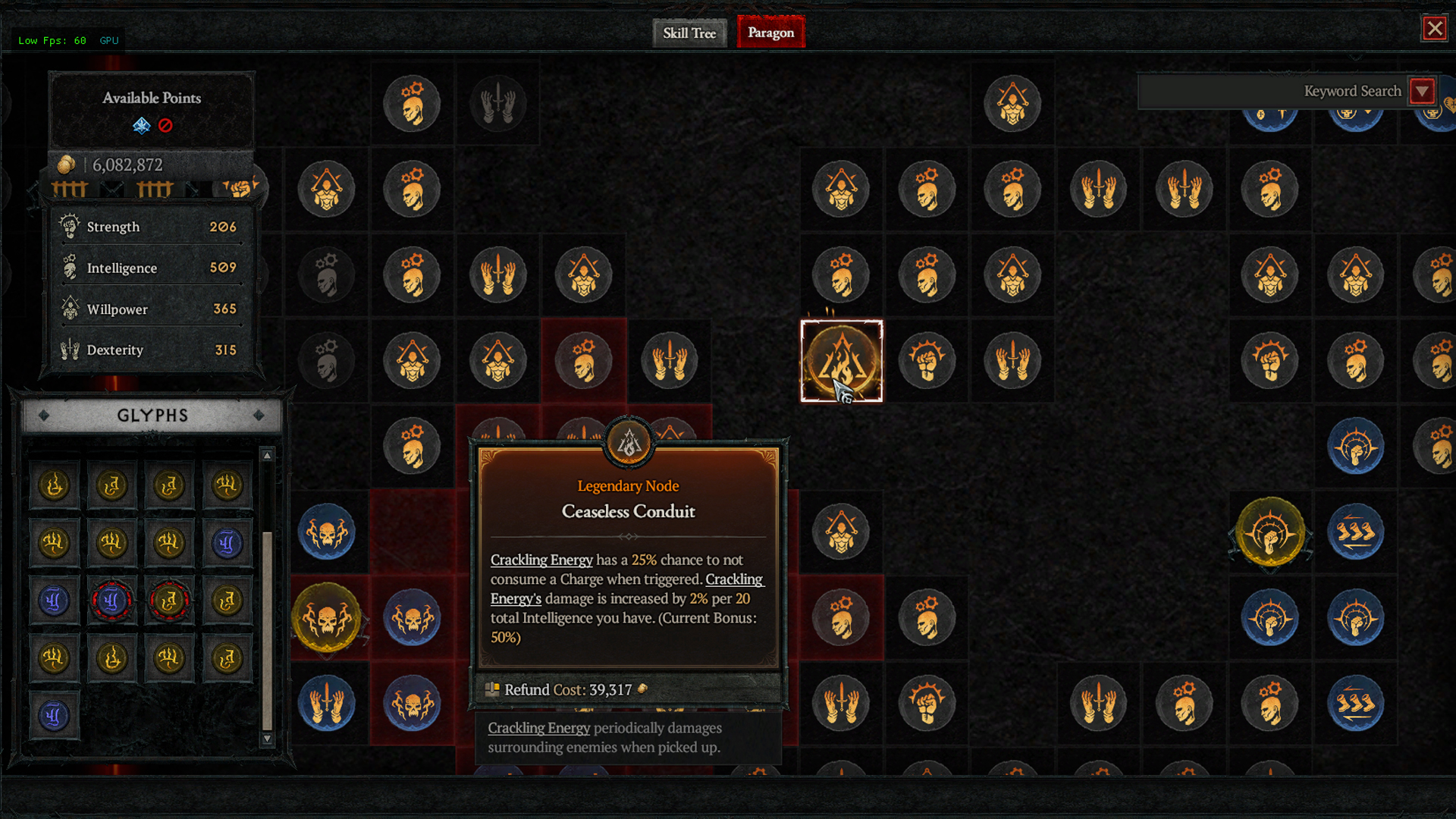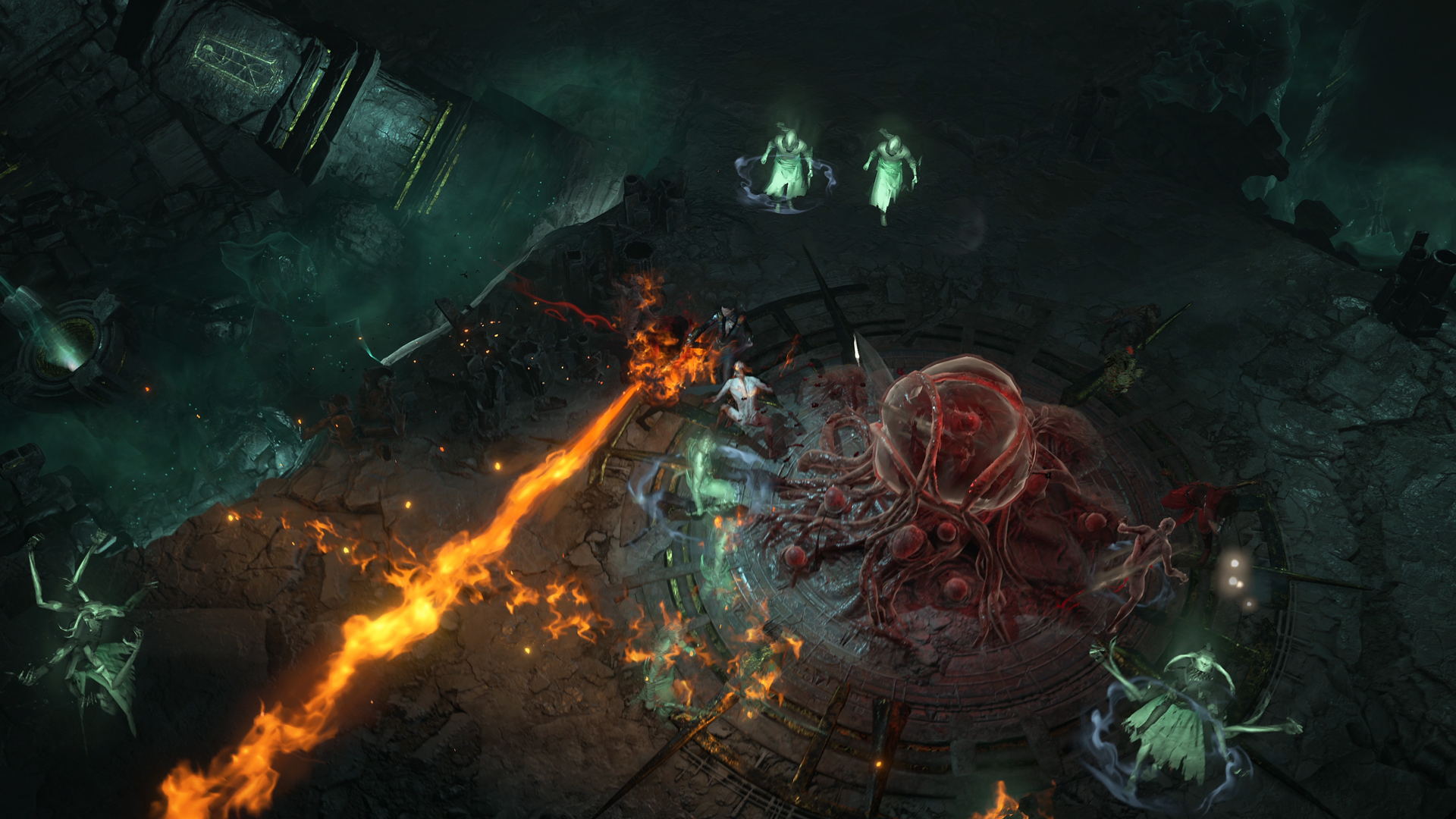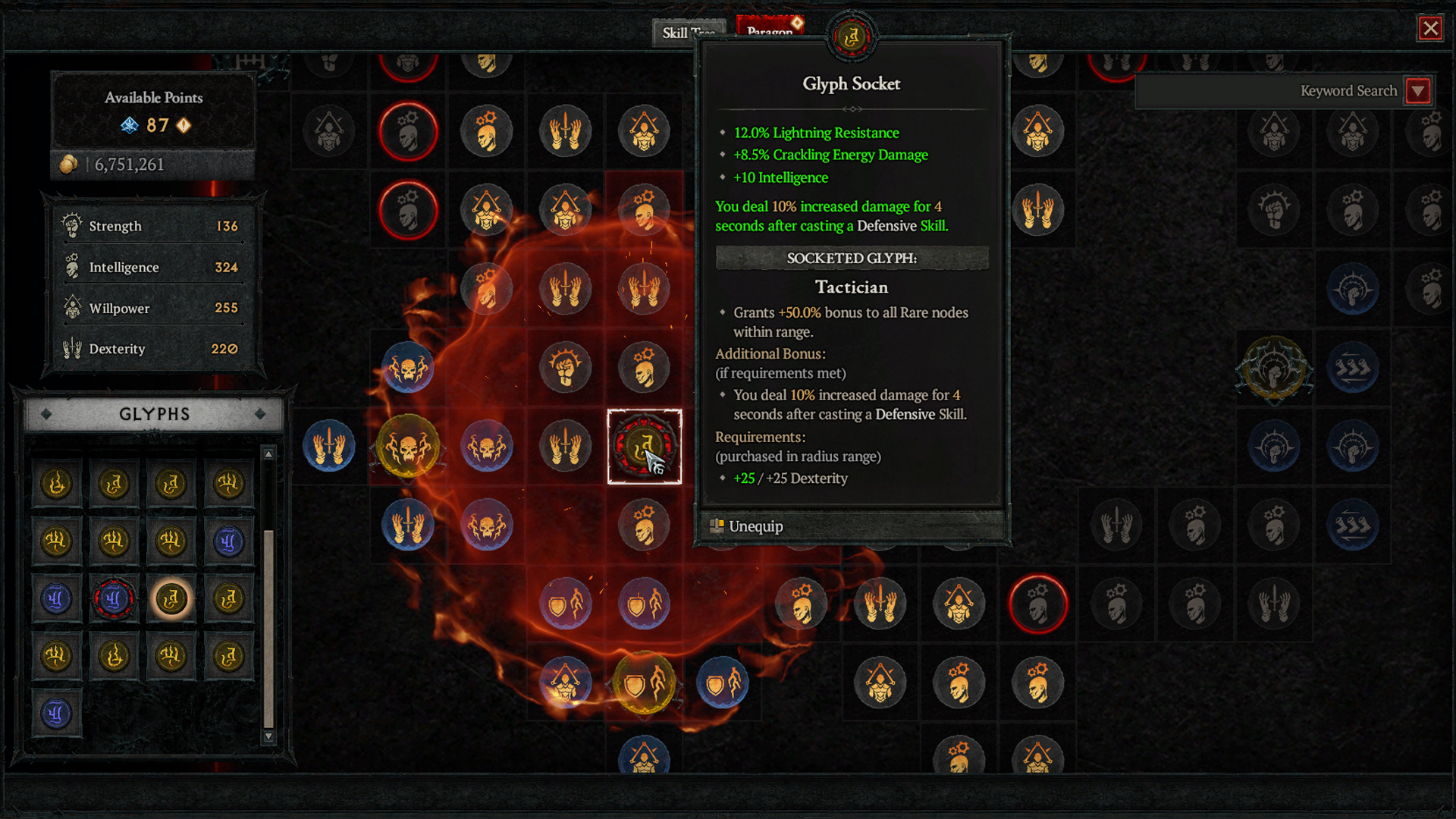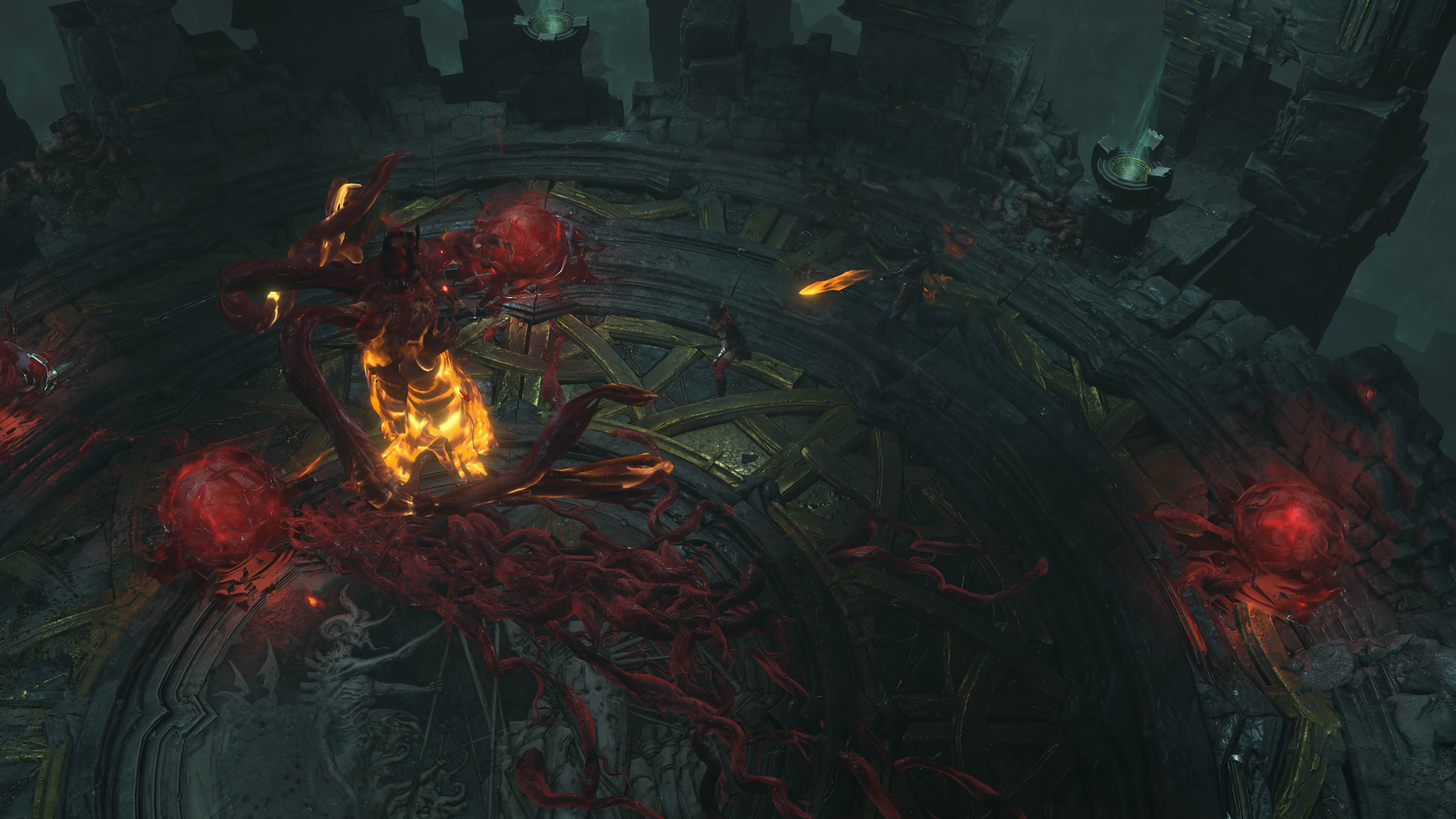
Diablo 4 Glyphs are the secret to surviving the endgame. Once you hit level 50 the shape of Blizzard's action-RPG begins to change. No longer are you able to lean on the campaign to guide you forward, instead you're pushed into navigating the complex Diablo 4 Paragon Board leveling system, Nightmare Dungeons, and new grinds to ensure that your class build is as powerful and efficient as possible.
At the heart of all of this are Glyphs in Diablo 4. If you're on the road to the Diablo 4 max level cap of 100 you should now be wondering how you collect and upgrade Glyphs, because they’re about to become the only thing that truly matters… well, that and collecting rare crafting resources like Fiend Roses, Abstruse Sigils, and Baleful Fragments. The Diablo 4 Glyph system can be a little difficult to wrap your head around initially, so below I'm going to take you through all of it to help you get the most out of your Paragon Points.
How to get Glyphs

Once you complete the core campaign you are going to want to switch up the Diablo 4 World Tiers so that you're on Veteran. From there, head to the Kyovashad Capstone Dungeon and complete it to unlock World Tier 3 – it's on this challenging tier that you'll unlock Nightmare Dungeons – the perfect method for farming Legendary loot and the all-important Glyphs.
While you will receive eight Magic Glyphs when you unlock the Paragon Board, you are going to quickly want some more. Glyphs will drop from slain enemies so long as you're on World Tier 3, while Rare Glyphs will drop during Nightmare Dungeons if you're lucky. More difficult Nightmare Dungeons also have the chance to drop more Glyphs.
How to access Nightmare Dungeons to farm Glyphs

To access those Nightmare Dungeons you'll first need to get your hands on a Nightmare Sigil. While these can drop across the Diablo 4 map you can take some of the chance out of the process by completing Grim Favors for the Tree of Whispers (which unlocks once you complete the campaign). Obtain 10 Grim Favors and turn it into the tree to be rewarded with a loot drop which has a high chance of dropping Nightmare Sigils, a consumable which will convert a regular Dungeon into a Nightmare Dungeon.
Once you have your first, you'll also unlock Sigil crafting with the Occultist in Kyovashad – which is important later, as you'll be able to use Sigil Powder to create Nightmare Sigils with higher Tiers. The higher the tier the more difficult the dungeon, but the higher the chance that you'll loot more Glyphs as you hack and slash through hundreds of monsters.
How to use Glyphs

In the middle of your first Paragon Board is an empty Glyph socket. But before you can socket one of your Glyphs you'll first need to reach it, which you'll need to do by investing the necessary Paragon Points into other nodes, creating an unlock path.
Just to recap here: Glyphs can be socketed into a special slot on the Paragon Board to modify the stats of the surrounding nodes in a three-square radius. Any nodes within this boundary will see some form of benefit; be it an improvement to a base stat (Dexterity, Intelligence, Strength, Willpower), a secondary effect, or other useful passive enhancement. For example, in my best Diablo 4 Necromancer build I was able to use a rare Necromancer Glyph which added a +4 damage bonus to my Skeletal Warriors and improved the Intelligence buff of the nodes surrounding it.
Rare glyphs often come with other fixed bonuses too, which unlock when certain stat requirements are met. For example, a Glyph may ask you to reach a total intelligence of 300, which would then increase your critical strike damage by 10% after casting an offensive spell.
At this stage of the game, you should have some degree of understanding about your class and build's particular strengths and weaknesses, and you'll want to use Glyphs to play to these. Try to place a Glyph where its bonus will stack the highest relevant upgrades within the largest radius possible, allowing you to improve in key disciplines quickly.
How to upgrade Glyphs

If you really want to storm through the endgame, you should begin to focus on upgrading your Glyphs to level 15 as quickly as possible. Every Glyph in the game has a base level which you can increase – buffing the stat attributes and the radius of effect for its bonuses on the Paragon Board. The thing is, you can only upgrade a Glyph at the end of a Nightmare Dungeon.
If you successfully complete a Nightmare Dungeon within the allotted time, it'll spawn a unique Glyph upgrade altar. You can use this to spend the Glyph XP that you've been accruing by running the Nightmare dungeons, with the more challenging the dungeon the higher reward of Glyph XP that you'll get back. Earlier, I said it would be important to get Glyphs to level 15 as quickly as possible, and that's because a Glyph will increase its effective radius on the Paragon Board by one node every 15 levels.
Leveling and upgrading Glyphs becomes increasingly more expensive, and it's impossible to respec Glyph XP once you've spent it, but this is a really good way of maximizing the potential of your build as you start pressing into higher World Tiers.
© GamesRadar+. Not to be reproduced without permission.
Weekly digests, tales from the communities you love, and more

Josh West is the Editor-in-Chief of GamesRadar+. He has over 15 years experience in online and print journalism, and holds a BA (Hons) in Journalism and Feature Writing. Prior to starting his current position, Josh has served as GR+'s Features Editor and Deputy Editor of games™ magazine, and has freelanced for numerous publications including 3D Artist, Edge magazine, iCreate, Metal Hammer, Play, Retro Gamer, and SFX. Additionally, he has appeared on the BBC and ITV to provide expert comment, written for Scholastic books, edited a book for Hachette, and worked as the Assistant Producer of the Future Games Show. In his spare time, Josh likes to play bass guitar and video games. Years ago, he was in a few movies and TV shows that you've definitely seen but will never be able to spot him in.


